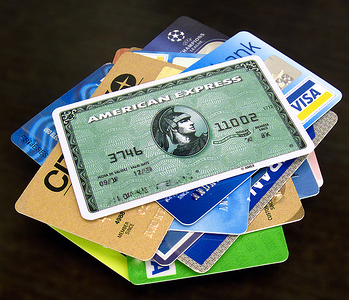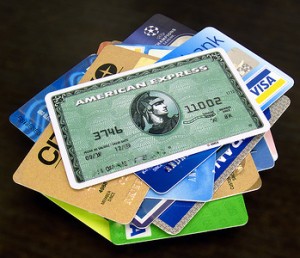Why You Shouldn’t Let Your Credit Cards Out of Your Sight
June 30, 2015 (Gephardt Daily) – In Europe, servers usually use individual card readers in a restaurant so your credit or debit card is swiped right in front of you.
Here is the number one risky thing you can do with your credit or debit card in the U.S.: you can let it out of your sight.
You just don’t think about leaving your card as the server takes it behind the curtain.
If a server leaves with your card, worst case scenario, they can swipe the card and instantly receive your full card holder name and card number, and all the other information you need to process your credit card.
Bryan Tamietti, an expert and co-owner of UBC Payment Services, a credit called processing company, said the process is called skimming.
“The key thing is, don’t let the credit card out of your sight, because if it’s out of your sight, you don’t know what happens to it,” he said.
“Skimming” is a method by which thieves steal your credit card information, and all it requires is a little illicit technology and a lot of criminal intent by those who handle your credit card.
Creditcards.com said skimming occurs most frequently at retail outlets that process credit card payments — particularly bars, restaurants and gas stations.
How skimming works
Skimmers are small devices that can scan and store credit card data from the magnetic stripe. Crooks can install skimmers on a gas pump, or corrupt employees can have a skimmer stashed out of sight of customers. Once the card is run through the skimmer, the data is recorded, and the crooks can sell the information through a contact or on the Internet, at which point counterfeit cards are made. The criminals go on a shopping spree with a cloned copy of the credit or debit card, and cardholders are unaware of the fraud until a statement arrives with purchases they did not make.
How to avoid skimming
- Make sure your card stays in sight, and never let anyone leave of your presence with the card if you can help it. If you are concerned about letting go of your card at restaurants, use cash instead.
- Monitor credit card receipts and check them carefully against your statements. If you are married, sit down with your spouse to account for all charges. Some thieves take out small amounts in hopes cardholders won’t notice.
- Shred unwanted financial solicitations and put your mail on hold when you leave town. This will not help with skimming, but it can help with other forms of identity theft.
To further protect yourself from potential unauthorized charges or identity fraud, you can request that credit bureaus monitor your accounts for unusual spending patterns and require them to notify you before new credit can be granted in your name. These services come at a price; normally under $100 per year depending on the credit agency. But that might be a worthy investment, especially if you eat in restaurants on a regular basis.
How to deal with skimming
- Call the police. Make a police report and hang on to the police report number.
- Contact your bank or credit card issuer immediately and tell them your card data has been stolen. If you don’t make a report quickly, you may be liable for some or all of the unauthorized charges.
- If you report swiftly, federal law caps your liability at $50. Most credit cards voluntarily go further, and won’t charge you at all — again, if you report quickly.








